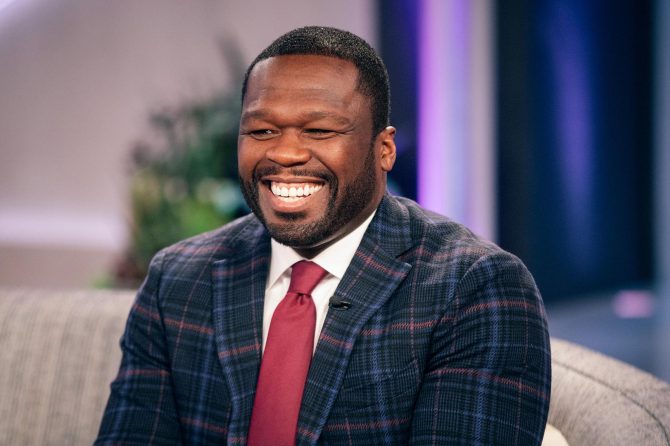In the realm of competitive golf, the synthesis of technical proficiency and strategic insight is paramount to achieving consistent performance. Walter Hagen,an iconic figure in the sport,exemplified this intricate balance through his innovative techniques and astute course management. Hagen’s approach transcended mere physical ability; it was deeply rooted in psychological fortitude and strategic decision-making. This article delves into the critical insights garnered from Hagen’s methodology, exploring how his emphasis on meticulous shot selection, mental resilience, and effective course navigation can serve as foundational elements for contemporary golfers seeking to elevate thier game. By examining Hagen’s principles, we aim to provide a framework for honing both the mental and technical aspects of golfing, ultimately leading to improved performance on the course.
The Role of Precision in Shot Selection
Precision in shot selection is a pivotal component of successful golfing strategies, emphasizing the need for a calculated approach to each stroke. elite golfers understand that a hasty decision can lead to undesirable outcomes, as each shot requires a thorough assessment of various factors such as distance, wind conditions, and course layout. Consequently, meticulous evaluation is essential to determine the right club, angle, and trajectory necessary for executing an effective shot.
To effectively harness the power of precision, golfers should take into account several key variables:
- Distance to Target: Measure the exact distance from the ball to the intended target, utilizing tools such as rangefinders or yardage markers.
- Wind Direction and speed: Analyze how wind conditions may influence the ball’s flight, adjusting your shot selection and aim accordingly.
- Lie of the Ball: Evaluate the ball’s position—whether it’s in the rough, a bunker, or on the fairway—as this impacts club selection and shot execution.
- Green Conditions: Understanding the speed and slope of the greens can guide putting strategy and help refine shot accuracy.
Utilizing a systematic approach, golfers can develop a personalized decision-making framework that sharpens their shot selection process. The following table outlines a simple yet effective guideline to improve precision in shot decisions:
| Situation | consideration | Recommended Action |
|---|---|---|
| Long distance to the green | Factor in your average distance with each club | Select a hybrid or wood for optimal distance |
| Wind against | Assess wind strength | Choose a lower lofted club |
| Bunker shot | Examine the lie of the ball | Utilize a sand wedge for easier lift |
| Sloped green | Evaluate slope and grain | Adjust aim to compensate for break |
Emphasizing Mental Resilience in Golf Performance
In the realm of golf, the significance of mental resilience cannot be overstated. Many players understand that technical skills alone do not ensure success on the course; the ability to navigate psychological challenges is paramount. As Walter Hagen famously emphasized, the mind is a powerful ally in the mastery of golf. Establishing a robust mental framework allows players to maintain focus,adjust strategies on the fly,and push through barriers that might otherwise hinder performance.
Key aspects of mental resilience in golf can be encapsulated in the following strategies:
- Visualization: Imaging successful shots fosters confidence and clarity during play.
- Positive Self-Talk: Encouraging internal dialogue can combat negativity and reinforce confidence.
- mindfulness Techniques: Staying present helps golfers focus on the current shot rather than past mistakes.
- Routine Progress: Establishing pre-shot routines creates a sense of familiarity and stability for the player.
Moreover,developing mental resilience also involves learning from each game,regardless of the outcome. Frequent reflection and analysis allow golfers to identify strengths and areas needing betterment. A helpful framework for self-reflection can be represented in the table below:
| Reflective Question | Purpose |
|---|---|
| What was my strongest shot? | Recognizing strengths boosts confidence. |
| What challenged me the most? | Identifying weaknesses guides focused improvement. |
| How did I handle pressure? | assessing mental responses aids resilience training. |
| What did I learn? | Continual learning enhances skill development. |
adopting these strategies enables golfers to cultivate an inner strength that complements their physical abilities. Mental resilience is not merely an accessory in the game of golf; it is a fundamental element that can dictate performance outcomes. As players intentionally work on this aspect of their game,they can unlock their fullest potential,echoing Walter Hagen’s belief that mastery of golf encompasses not only the swing but the mind as well.
Strategic Course Management for Optimal Scoring
Course management is a critical aspect of lowering one’s score in golf, emphasizing the importance of strategic decision-making throughout the round. By analyzing the game not just in terms of swing mechanics but also from a tactical perspective, players can position themselves more favorably on the course. This means evaluating every shot based on individual strengths and weaknesses, rather than adhering strictly to conventional wisdom. A solid understanding of the layout, paired with the strategic request of risk and reward, can vastly improve a player’s performance.
One of the fundamental tenets of effective course management is understanding lie conditions and mileage per club. This involves knowing when to take calculated risks and when to play conservatively. Players should assess the following:
- Pin Position: Identify the most accessible hole locations each day.
- Environmental Factors: Consider wind direction and speed before every shot.
- Personal Comfort: Reflect on one’s proficiency with each club under varying conditions.
In addition to assessing external factors, players must also develop a strong mental game, wich includes visualization and preparation.Creating a mental roadmap of the course allows golfers to better adapt and respond to various situations. The following strategies represent a smart approach:
| strategy | Description |
|---|---|
| Pre-Round Planning | Walk the course if possible; assess hazards and ideal landing zones. |
| Shot Visualization | Envision the ball’s path before executing each shot. |
| Accepting Limitations | Understand and embrace your skill level to make wiser choices. |
Techniques for Enhancing Focus and Decision-making
To enhance focus and decision-making in golf, it is crucial to adopt a multi-faceted approach that addresses both mental and physical aspects of the game. Successful golfers, like walter Hagen, understood that maintaining mental clarity during play is essential for executing well-timed decisions. Techniques such as visualization can have a profound impact. By picturing each shot before making it, a player can reduce anxiety and increase confidence in their choices. Furthermore, practicing mindfulness can help golfers remain present, minimizing distractions from the external environment.
Another vital component in sharpening focus is developing a **pre-shot routine**. A consistent routine helps establish a rhythm and calms nerves before each swing. Essential elements of a pre-shot routine may include:
- Warming up with stretching exercises to ensure physical readiness
- Evaluating environmental conditions, like wind and terrain
- Reflecting on the target and desired outcome for each shot
Implementing these steps leads to a more deliberate approach, allowing golfers to make informed choices rather than reacting impulsively.
Incorporating analytical techniques into practice sessions can also considerably enhance decision-making skills. By keeping a **shot log**,players can track results and assess patterns in performance. For example:
| Shot Type | Success Rate |
|---|---|
| Drives | 75% |
| Approaches | 60% |
| Putt | 80% |
Analyzing the data can help golfers identify strengths and weaknesses, allowing them to make strategic adjustments in their game. Through this analytical lens, players can focus on honing areas that require improvement, leading to more tactical decisions during play.
Building a Consistent Practice Regimen for Long-term Success
To cultivate enduring success in golf, establishing a **consistent practice regimen** is essential. This involves not just the frequency of play,but a **structured approach** that targets specific areas for improvement. Engage in various drills that focus on key techniques, such as grip, stance, and swing mechanics. This can involve:
- Dedicated Short Game Practice: Spend ample time honing your putting and chipping skills to refine your touch around the greens.
- Rotational Drills: Incorporate exercises that enhance your body rotation and balance, vital elements in achieving an effective swing.
- Video Analysis: Utilize video to assess your swing, comparing your form against established standards or previous performances.
In addition to physical drills, mental conditioning can significantly bolster your overall game.Techniques such as visualization and focused breathing should be woven into your practice routine. Schedule regular sessions that allow for mental rehearsals of different shots, utilizing methods like:
- Visualization Techniques: Picture yourself succeeding in various scenarios, building confidence before stepping onto the course.
- Mental Resilience Training: Implement mindfulness strategies to maintain focus under pressure, helping to manage anxiety during tournaments.
Lastly,keeping a detailed practice log can offer invaluable insights into your development. Tracking your progress allows for targeted adjustments to your regimen and a clearer understanding of your strengths and weaknesses. Consider organizing this information using a simple table:
| Date | Focus Area | Key Takeaways |
|---|---|---|
| 2023-10-01 | Putting | Improved distance control with consistent stance. |
| 2023-10-05 | Chipping | Gained accuracy with a more stable grip. |
| 2023-10-10 | Full Swing | Enhanced body rotation; smoother follow-through. |
Wrapping Up
the strategic insights derived from Walter Hagen’s approach to golf underscore the significance of mental resilience, meticulous shot selection, and adept course management. Hagen’s legacy serves as a testament to the notion that success in golf extends beyond mere technical ability; it encompasses a holistic understanding of one’s surroundings and a disciplined mindset. As modern golfers seek to refine their skills and elevate their performance, integrating these principles can provide a significant advantage. By embodying Hagen’s philosophies, players can not only enhance their game but also cultivate a deeper appreciation for the complexities inherent in the sport. Ultimately, the mastery of golf techniques extends beyond the fairways and greens, manifesting as a lifelong pursuit of personal excellence and strategic acumen.





